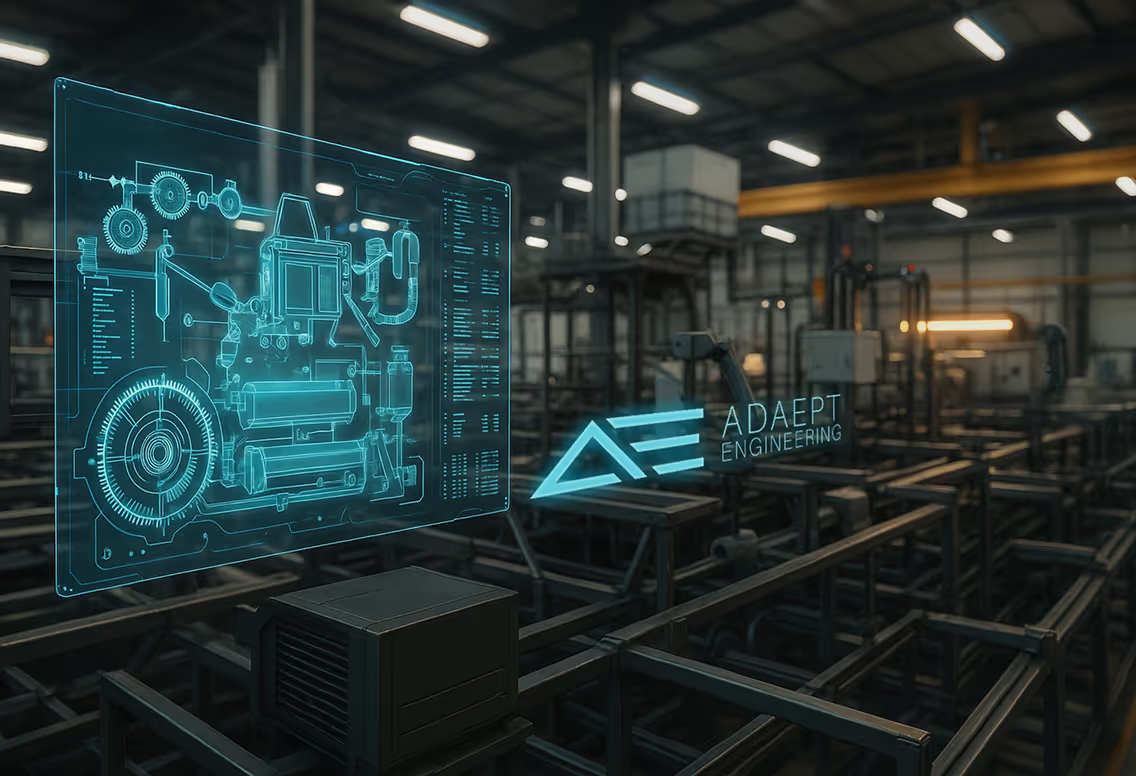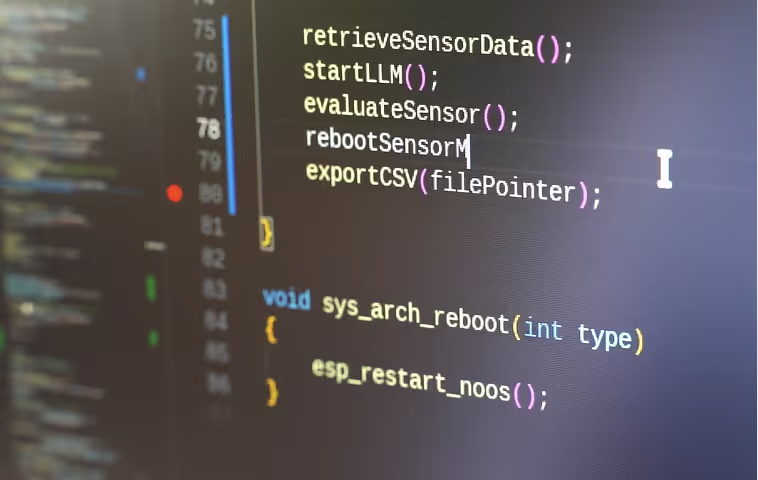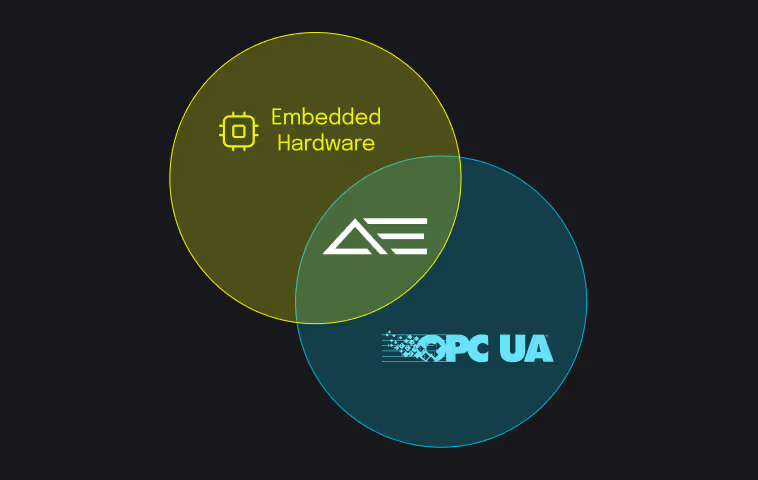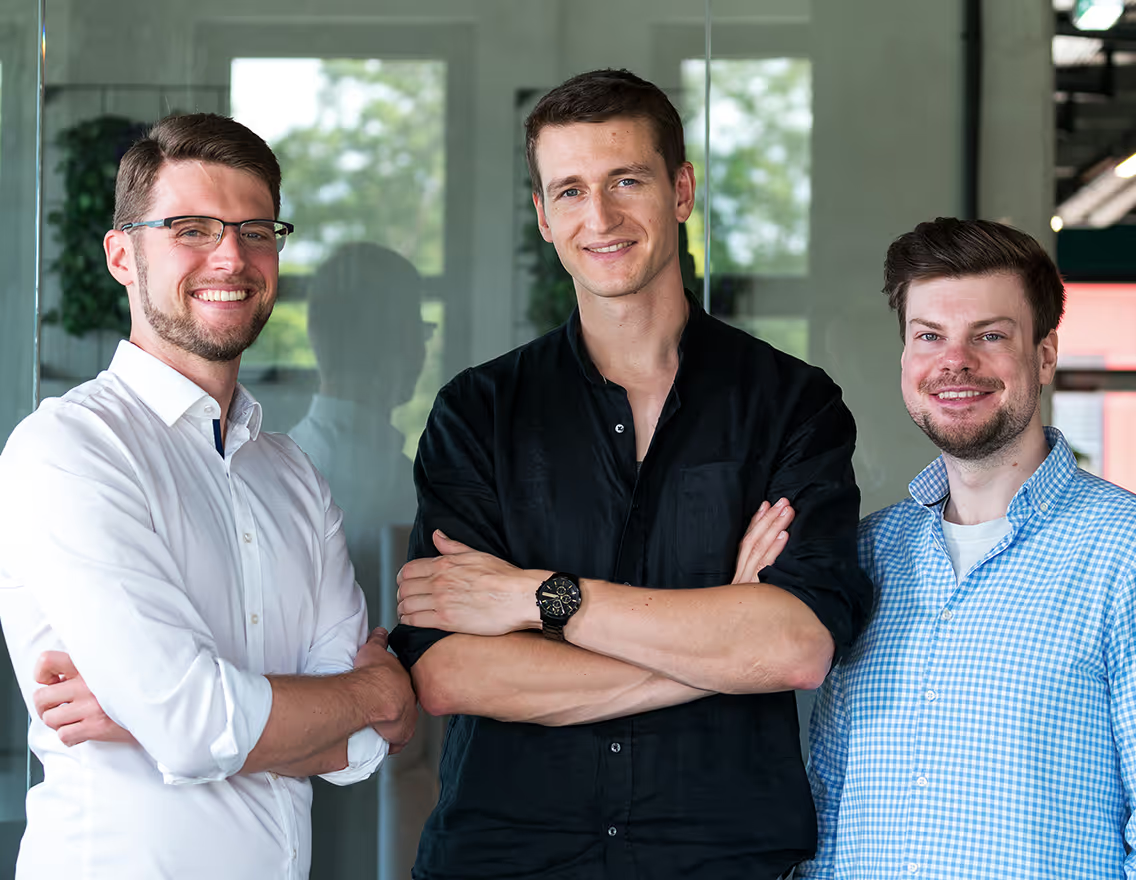Software & interfaces for smart machines
Tangible engineering and scientific precision: Adaept Engineering offers innovative software solutions that take your machines and systems into the digital age. Whether retrofitting or new development — we coordinate, develop and integrate stakeholders for your project success.
Our clients and partners
























Industry is standing still — we are bringing it into the digital age.
Many production companies today still work with outdated machines without digital interfaces, without data, without an overview. Downtimes, wasted energy and a lack of transparency are part of everyday life. Adaept Engineering turns analog machines into digital players — efficient, smart and future-proof.

We support plant operators and machine manufacturers in their digital transformation.

Innovative solutions for smart machine communication
We offer tailor-made solutions for your specific challenges.

Our solutions for plant operators and machine builders.
We offer innovative retrofit solutions to optimize existing machines.

Technology excellence for smart communication
Smart communication, OPC UA and embedded software of the highest standard.
From research to industry: specialists for smart machine communication
Adaept Engineering is an engineering firm with deep roots in research and a clear goal: making machines more intelligent. As experts in IT security, industrial communication and data analysis, we have been helping companies make their systems digitally fit for the future since 2016. As a Umati partner and member of the OPC Foundation, we rely on internationally recognized standards. Our involvement in OPC standardization committees underscores our commitment to excellence.

Schedule a call back for a non-binding consultation.
Every project is different. We are happy to use our experience to find the ideal solution for you.
Frequently asked questions
Does Adaept Engineering offer internships or working student positions?
Yes, we offer internships and working student positions. Since 2015, we have gained extensive experience in mentoring students. In our many years of work as research engineers at the University of Rostock, we have supervised numerous bachelor and master theses and successfully accompanied our students to their defense. Students who would like to write their thesis at Adaept Engineering are welcome to join us.
How do you calculate your prices?
We calculate our prices using two pricing models to meet the different needs of our customers. In classic project work, we work at an hourly rate and create an individual offer based on the specific requirements of the project. Alternatively, we offer our software for devices and machines via a licensing model, which is available either as a lifetime license or with annual billing.
What information do you need to start a project?
At the start of a project, we need specific information in order to be able to offer tailor-made solutions. If a plant operator wants to upgrade existing machines with modern IT interfaces, we need the technical documentation of the existing fieldbus interfaces. For device and machine manufacturers who want to equip their products with modern interfaces, it is important to tell us their current level of technical development, including the selection of microcontrollers, the PLCs used and the technical requirements.
What is the time frame for an average project?
The time frame for an average project varies depending on technical requirements. In our specialist areas, such as industrial communication, we can usually shorten the implementation period from the original 12 months to up to 3 months. This is made possible by our efficient processes and proven methods.
How do you structure communication and reporting during the project?
During a project, we attach great importance to transparent communication and regular reporting. We organize regular project meetings with our customers to inform about progress and interim results and to ensure that everyone involved is always up to date.
Where is your location and in which regions does she work?
Our location is in Rostock, Germany. We implement industrial projects both in Germany and throughout Europe. We are present at trade fairs and conferences all over the world, and our partner network extends all the way to South Korea.
How does Adaept Engineering differ from other engineering service providers?
Adaept Engineering stands out from other engineering service providers through a comprehensive approach to integrating OPC UA into our customers' products and systems. We guide you through the entire process — from data modeling and standardization to implementation and final testing. Our particular expertise lies in implementing OPC UA on microcontrollers. In addition, we initiate and manage industrial research projects to develop and implement innovative use cases together with our customers.
Start a project request now
Let us develop your solutions together.

